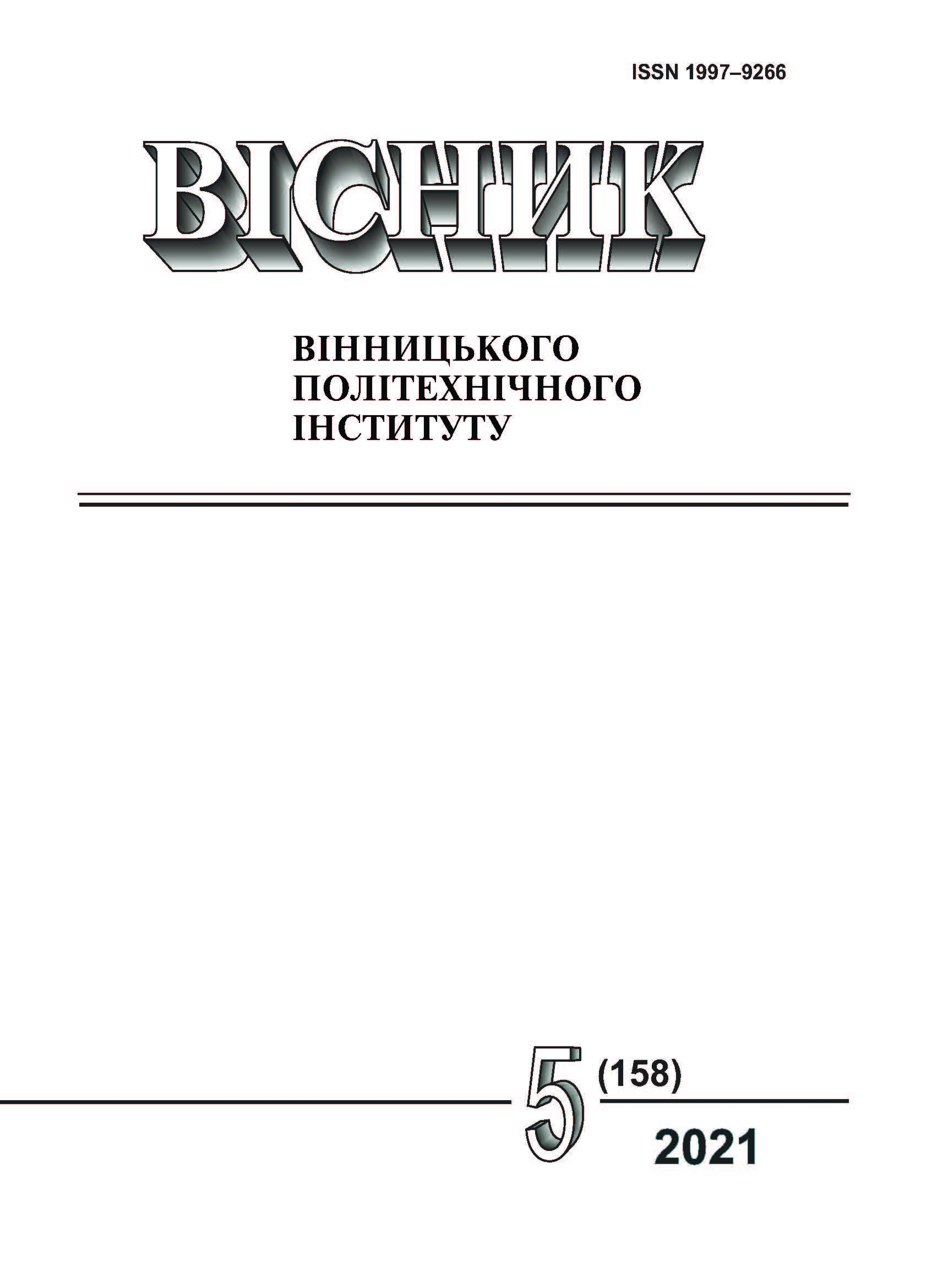The Effect of Helium on Water Purification with Different Concentrations of Microorganisms
DOI:
https://doi.org/10.31649/1997-9266-2021-158-5-38-42Keywords:
microorganisms, Bacillus cereus, destruction, gas, heliumAbstract
The influence of bubbled inert gas on the viability process of rod-shaped microorganisms in the water has been studied. The micro-objects were resistant sporogenic cells of Bacillus cereus type, which belong to the Bacillaceae family, and the test gas was helium. Helium was fed at a rate of 0.2 cm3/s. Bacteria were added to distilled deaerated water, creating model aqueous media with different initial numbers of microorganisms (NM). The concentration of microorganisms per unit volume of water was within the same order: NM01 = 3.4 · 104 CFU/cm3, NM02 = 4.8 · 104 CFU/cm3 and NM03 = 7 · 104 CFU/cm3. An in-depth method of culturing bacterial cells was used. Conditions for culturing microorganisms was temperature of 37 °C, duration of 48 hours. NM values before and after experiments was determined by counting the colonies that grew on the nutrient medium on Petri dishes. The calculated number of cells was expressed in colony-forming units (CFU). During microscopic examinations, cells of the fixed preparations culture (1-day and 3-day) were studied. Fixed cell preparations at x1200 are shown. The shape and size of the cells of the fixed preparation are shown, as well as the shape and location of the spores inside the cells. Illustrative material shows the oval shape of the spores. It was found that the diameter of the spores is smaller than the cell diameter.
The results of experimental studies show a change of NM values over time, during which there was a decrease of the cells number per unit volume of water during the two-hour duration of the process, regardless of the different NM0. The proportion of destroyed cells for each of their concentrations after every 30 minutes of water treatment was calculated and the values of the initial NM ratio to the current NM after each water sampling were given. The dependences of the proportion of destroyed cells of the treatment duration of microbial water with helium are graphically constructed. An increase in the proportion of destroyed cells with a decrease in the initial concentration of cells in the water was observed. The highest percentage of destroyed bacilli was reached at NM01 = 3.4 · 104 CFU/cm3, which was 77.06 %, while for NM02 = 4.8 · 104 CFU/cm3 and NM03 = 7 · 104 CFU/cm3 are 72.92 % and 47.72 %, respectively. Thus, a sufficiently high efficiency of helium alone during the treatment of microbial water containing resistant sporogenic bacteria has been experimentally shown.
References
M. Haseena, M. F. Malik, and A. Javed, “Environmental Risk Assessment and Remediation,” J. Water pollution and human health, no. 1(3), pp. 16-19, 2017. https://doi.org/10.4066/2529-8046.100020 .
F. N. Chaudhry, and M. F. Malik, “Factors Affecting Water Pollution: A Review,” J. Ecosyst Ecography, no. 7(1), 225 p., 2017.
Y. Du, Q. Y. Wu, and Y. Lu, “Increase of cytotoxicity during wastewater chlorination: impact factors and surrogates,” J. Hazard Mater., 324, pp. 681-690, 2017. https://doi.org/10.1016/j.jhazmat.2016.11.042 .
I. Huma, І. Masih, and J. P. Hoek, “An exploration of disinfection by-products formation and governing factors in chlorinated swimming pool water,” J. Water Health., no. 6(6), pp. 861-892, 2018. https://doi.org/10.2166/wh.2018.067 .
C. Bertelli, S. Courtois, and M. Rosikiewicz, “Reduced Chlorine in Drinking Water Distribution Systems Impacts Bacterial Biodiversity in Biofilms,” Front Microbiol., no. 9, pp. 252-260, 2018. https://doi.org/10.3389/fmicb.2018.02520 .
I. H. Mohsen, A. H. Mohsen, and H. K. Zaidan, “Health effects of chlorinated water: a review article,” J. Biotechnol., no. 16(3), pp. 163-167, 2019. https://doi.org/10.34016/pjbt.2019.16.3.24 .
A. Nescerecka, J. Rubulis, and M. Vital, “Biological instability in a chlorinated drinking water distribution network,” PLoS One, no. 9(5), pp. 89-95, 2014. https://doi.org/10.1371/journal.pone.0096354 .
А. М. Пальчицкий, и Т. С. Малахова, «Эффективность очистки и обеззараживания сточных вод от вирусов,» Химия и технология воды, № 17(6), с. 656-661, 1995.
Н. Г. Потапченко, Т. И. Левадная, и Н. М. Соболева, «Кинетика гибели E. сoli под действием озона,» Химия и технология воды, № 29(6), с. 582-594, 2007.
C. Li-Bing, Y. Sang-Tian, and X. Xin-Hui, “Enhanced sludge solubilization by microbubble ozonation,” Chemosphere, no. 72(2), pp. 205-212, 2008.
K. Hiragaki, T. Ishimaru, and M. Nakanishi, “Generation of ozone foam and its application for disinfection,” Eur Phys J. Appl. Phys., no. 71, pp. 20810-20816, 2015.
M. Q. Zhu, N. Y. Gao, and W. H. Chu, “Impact of pre-ozonation on disinfection by-product formation and speciation from chlor(am)ination of algal organic matter of Microcystis aeruginosa,” Ecotox. Environ. Safe, no. 120, pp. 256-262, 2015.
І. З. Коваль, «Життєздатність спорогенних бактерій в атмосфері інертних газів,» Науковий вісник Чернівецького університету. Біологія (Біологічні системи), № 12(1), с. 8-13, 2020. https://doi.org/10.26565/1992-4259-2020-23-10 .
І. З. Коваль, «Вплив концентрації аеробних бактерій на процес їх життєздатності в присутності кисню,» Вісник Харківського національного університету імені В. Н. Каразіна серія «Екологія, № 23, с. 118-123, 2020.
Ch. Dai, F. Xiong, and R. He, “Effects of low-intensity ultrasound on the growth, cell membrane permeability and ethanol tolerance of Saccharomyces cerevisiae,” Ultrasonics Sonochem., no. 36, pp. 191-197, 2017. https://doi.org/10.1016/j.ultsonch.2016.11.035
І. З. Коваль, «Переважаюча мікрофлора природних та стічних вод Львівщини,» Chemistry, Technology and Application of Substances, № 3 (2), с. 121-126, 2020. https://doi.org/10.23939/ctas2020.02.121 .
Downloads
-
PDF (Українська)
Downloads: 110
Published
How to Cite
Issue
Section
License

This work is licensed under a Creative Commons Attribution 4.0 International License.
Authors who publish with this journal agree to the following terms:
- Authors retain copyright and grant the journal right of first publication.
- Authors are able to enter into separate, additional contractual arrangements for the non-exclusive distribution of the journal's published version of the work (e.g., post it to an institutional repository or publish it in a book), with an acknowledgment of its initial publication in this journal.
- Authors are permitted and encouraged to post their work online (e.g., in institutional repositories or on their website) prior to and during the submission process, as it can lead to productive exchanges, as well as earlier and greater citation of published work (See The Effect of Open Access).





